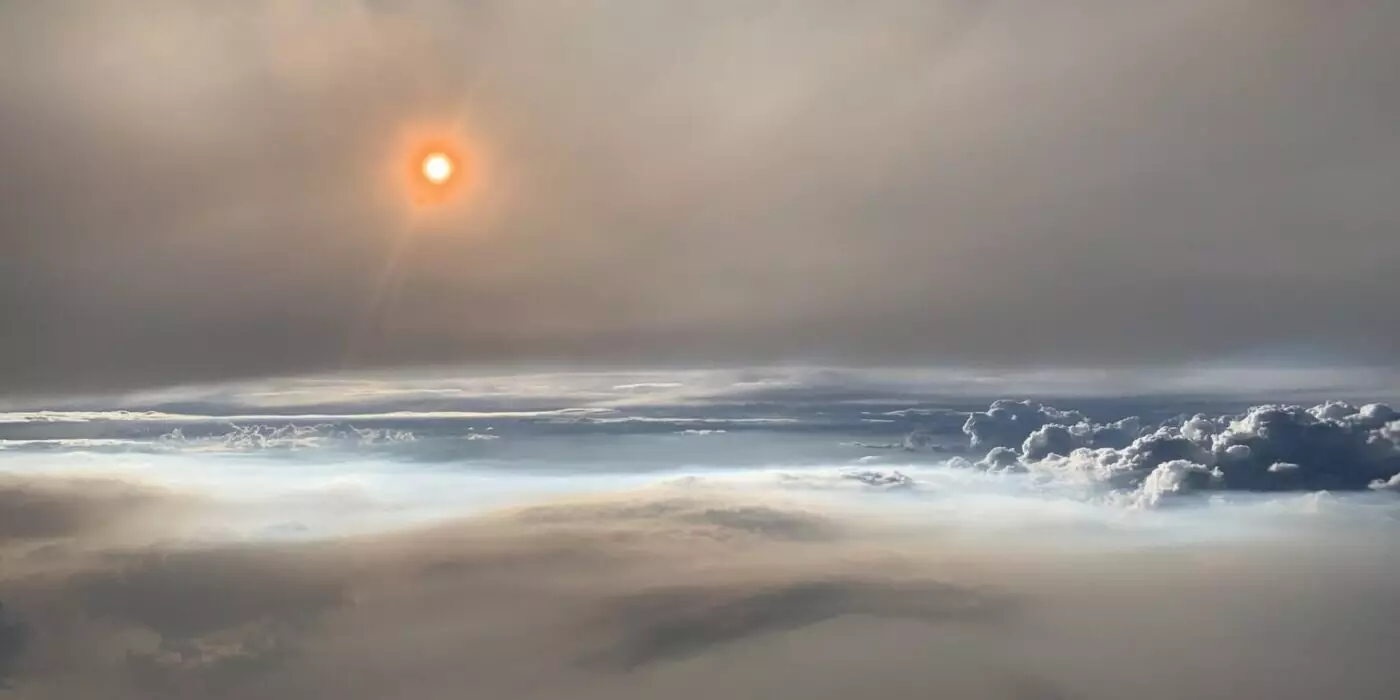The intensity and frequency of wildfires have been alarmingly escalating as global temperatures rise. This phenomenon is not simply a natural cycle but a harbinger of the consequences of climate change. Wildfires release a multitude of pollutants into the atmosphere, but one of the most concerning byproducts is black carbon. This tiny particle has a disproportionately large effect on the global climate due to its ability to absorb sunlight, thereby inducing warming effects in the atmosphere. As we grapple with these environmental changes, understanding black carbon and its connection to wildfires has never been more urgent.
Pyrocumulonimbus Clouds: A Unique Climate Challenge
One specific area of concern is the black carbon produced from high-intensity wildfires that leads to the formation of pyrocumulonimbus (pyroCb) clouds. These clouds are not your ordinary thunderheads; they can thrust smoke and aerosols into the upper reaches of the atmosphere, specifically the upper troposphere and lower stratosphere. The implications of this phenomenon are profound as particles can remain suspended for extended periods, exerting long-lasting effects on stratospheric temperatures and composition.
Recent research efforts, particularly a study conducted by scientists at Washington University in St. Louis, have shed light on the mechanisms at play in these events. The study, published in Nature Communications, raised crucial questions about the quantifiable effects of black carbon in pyroCb clouds. The findings reveal that black carbon particles originating from pyroCbs possess a much stronger ability to absorb sunlight compared to those from typical wildfires or urban sources.
Inside the Research: Innovative Approaches to Complex Problems
The research team, led by Professor Rajan Chakrabarty, undertook a daring field campaign to collect real-time measurements from within an active pyroCb thunderstorm in Washington State. This ambitious undertaking was part of the larger 2019 FIREX-AQ campaign, aimed at understanding fires’ influence across various environmental scales. What the team discovered is astounding: pyroCb black carbon can absorb twice the amount of visible sunlight compared to nascent black carbon particles typically produced by smaller wildfires or urban activities.
The research method was distinguished by its sophisticated assessment of the size and morphology of black carbon particles. By employing a nuanced particle-resolved model, researchers could accurately measure and quantify how much light these particles absorb. This level of detail is critical for climate modeling and forecasting future warming scenarios.
The Broader Implications: A Call for Comprehensive Studies
The implications of these findings are far-reaching. Black carbon produced by pyrocumulonimbus clouds contributes significantly to greenhouse gas effects, a contribution that has been calculated to be between 10% to 25% of the black carbon currently present in the lower stratosphere. The study pointed out that the impact of this phenomenon extends geographically—affecting both the Northern and Southern Hemispheres, thereby amplifying climate change’s global footprint.
Despite the advancements made, the complexity of black carbon behavior in the stratosphere necessitates further research. Future inquiries should aim at not just understanding but predicting the behaviors of these particles in the context of shifting climate patterns. If we are to devise effective climate models, we will require more direct measurements concerning earlier pyroCb black carbon light absorption.
The Path Ahead: Urgency in Research and Action
As scientists continue to document the repercussions of these atmospheric transformations, it becomes increasingly clear that the time for urgent action is now. While the current findings about black carbon’s effects offer a glimpse into the larger climate tapestry, a more nuanced understanding is essential. The link between wildfires, their resultant clouds, and striking changes in our atmosphere must be at the forefront of climate research initiatives.
In our quest for knowledge, we must confront questions of policy, environmental stewardship, and climate adaptation strategies head-on. The findings from studies like those conducted by Chakrabarty and his team are not merely academic; they represent crucial data needed to inform global climate responses and mitigation strategies. The challenge is significant—but so too are the opportunities for innovation, mitigation, and ultimately, understanding the complexities of our changing world.


Leave a Reply